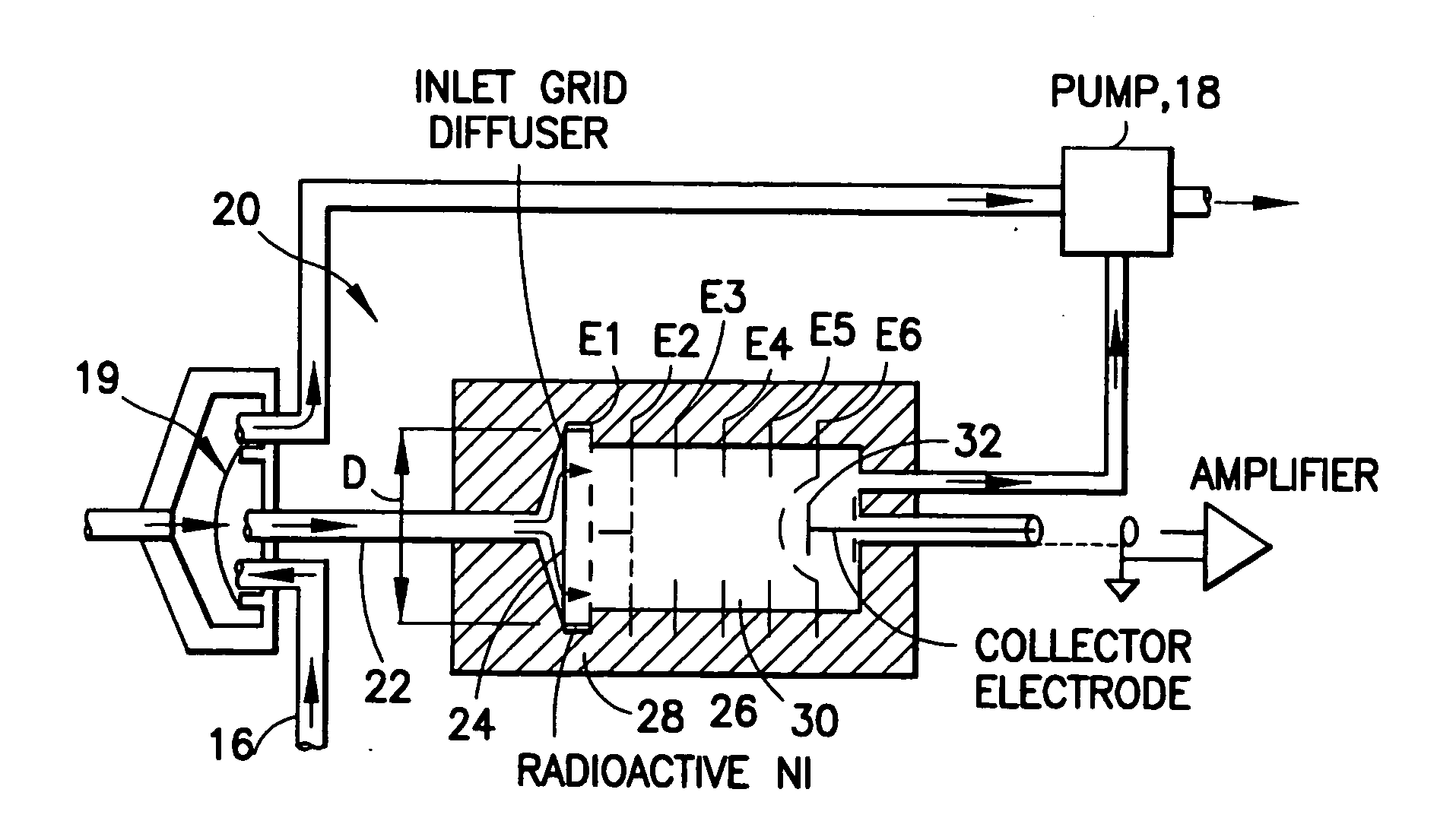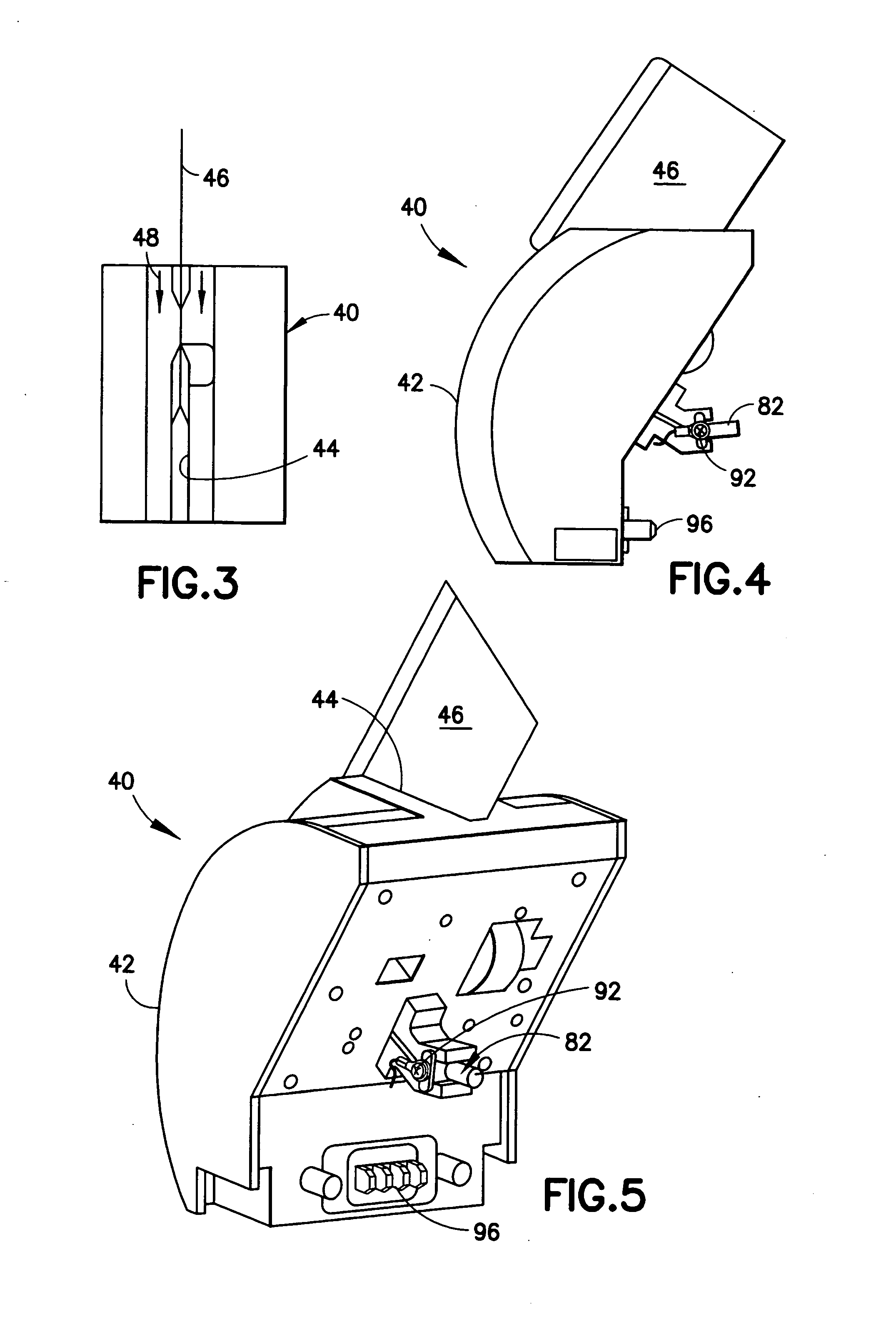Device for testing surfaces of articles for traces of explosives and/or drugs
a technology for detecting the presence of explosives and/or drugs on the surface of devices, which is applied in the direction of laboratory glassware, instruments, separation processes, etc., can solve the problems of inability to detect explosives and/or drugs, and inability to carry out terrorism prevention and other problems, to achieve the effect of reducing the risk of terrorism
- Summary
- Abstract
- Description
- Claims
- Application Information
AI Technical Summary
Benefits of technology
Problems solved by technology
Method used
Image
Examples
Embodiment Construction
[0038] A detector according to the invention is identified generally by the numeral 10 in FIG. 1. The detector 10 includes an outer housing 11 and a flat panel display monitor 12 such as an LCD monitor. An ion trap mobility spectrometer (ITMS) is disposed within the housing 11 and is illustrated schematically in FIG. 2.
[0039] The ITMS of FIG. 2 comprises a cylindrical detector 20 having an inlet 22 at one end for receiving sample air of interest borne by a carrier gas which that has been doped with a low concentration vapor (typically a few parts per million) employed as a charge transfer mediator. More particularly, the inlet 22 communicates with a source of sample air of interest 14 and a supply of carrier gas and dopant 16 with flows of gases to the inlet 22 being enabled by a flow generator such as a pump illustrated schematically and identified by the numeral 18 in FIG. 2. A heated membrane 19 formed from a microporeous refractory material or from dimethyl silicone is disposed...
PUM
| Property | Measurement | Unit |
|---|---|---|
| temperature | aaaaa | aaaaa |
| cycle time | aaaaa | aaaaa |
| thickness | aaaaa | aaaaa |
Abstract
Description
Claims
Application Information
 Login to View More
Login to View More - R&D
- Intellectual Property
- Life Sciences
- Materials
- Tech Scout
- Unparalleled Data Quality
- Higher Quality Content
- 60% Fewer Hallucinations
Browse by: Latest US Patents, China's latest patents, Technical Efficacy Thesaurus, Application Domain, Technology Topic, Popular Technical Reports.
© 2025 PatSnap. All rights reserved.Legal|Privacy policy|Modern Slavery Act Transparency Statement|Sitemap|About US| Contact US: help@patsnap.com



